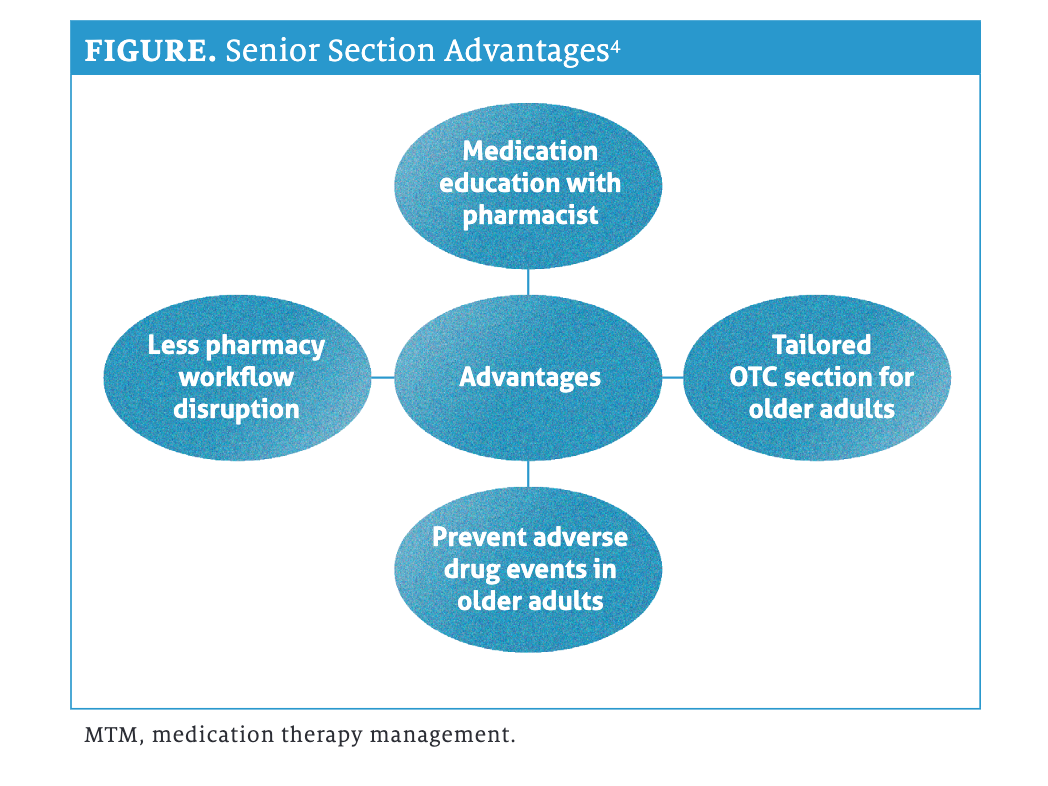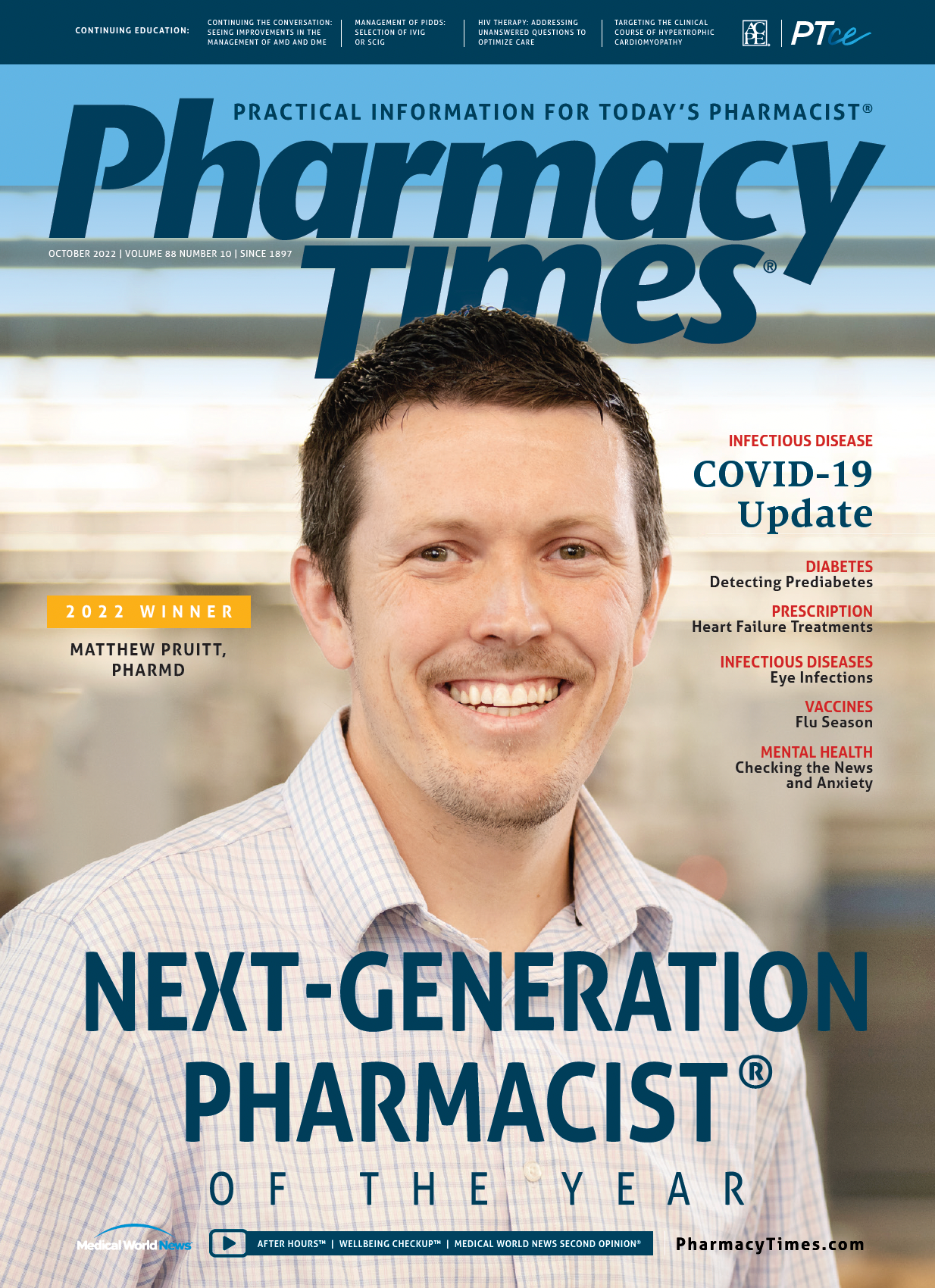Medication Therapy Management Today®: Senior Sections in Pharmacies Can Improve Drug Safety
Redesigning stores with special OTC areas for older patients can enhance communication, education.
OTC medication safety is especially important for patients 65 years and older. In fact, older adults account for 30% of OTC medication use in the United States.1 Approximately 25% of older adults take a combination of 10 or more OTC and prescription medications.1 This can result in problems including adverse drug reactions (ADRs) and drug interactions. Redesigning pharmacies with specific OTC senior sections for older patients can improve medication safety. Pharmacists can play a critical role in this process to ensure that older patients are educated about appropriate OTC medication use and product selection.
Pharmacists can educate older patients about OTC medications that should be avoided or used cautiously because of the risk of ADRs and drug interactions. For example, nonsteroidal anti-inflammatory drugs (NSAIDs) such as ibuprofen (Motrin) should be avoided, especially long term.2 These medications can increase the risk of bleeding and stomach ulcers.2 Additionally, they can raise blood pressure and cause renal dysfunction. Patients taking anticoagulants such as apixaban (Eliquis) or warfarin (Coumadin) have a higher risk of bleeding, especially when taking them with NSAIDs.2
In an interview, Michelle Chui, PharmD, PhD, professor and director of the Sonderegger Research Center for Improved Medication Outcomes at the University of Wisconsin-Madison School of Pharmacy, discussed her study regarding senior sections for OTC medications in pharmacies.3 The pilot study examined implementing senior sections in 4 Midwest pharmacies that included the following 4 medication classes: allergy, cold and cough, pain, and sleep.4 Certain high-risk products for older adults, such as aspirin when used for pain and diphenhydramine and cold and cough combination products, were excluded from the senior sections.4 The main OTC aisle also included signage identifying high risk medications and encouraging older individuals to visit the senior sections and ask pharmacists questions about products.4 The study found that the senior sections provided more effective, efficient, and frequent engagements between patients and pharmacy staff members (Figure).4

“[Individuals] want the ability to select their own product on their own time; to support that, we need to design pharmacies to facilitate not only safety but also patient autonomy. We redesigned the OTC section of pharmacies with signage and tools to help patients make appropriate selections, in proximity to the pharmacy counter," Chui said.
"With pharmacists at close range, patients could easily reach out with questions, or pharmacists could come over and see [whether] they needed help choosing the safest OTC option for them. Our redesign provided an effective, sustainable long-term soluiton in that it builds a system that draws [individuals] to do the right thing," Chui said. "Importantly, it improved medication safety without increasing pharmacist or technician workload."
References
1. Stone JA, Lester CA, Aboneh EA, Phelan CH, Welch LL, Chui MA. A preliminary examination of over-the-counter medication misuse rates in older adults. Res Social Adm Pharm. 2017;13(1):187-192. doi:10.1016/j.sapharm.2016.01.004
2. Tip sheet: ten medications older adults should avoid or use with caution. HealthinAging.org. Updated January 2019. Accessed July 28, 2022.https://www.healthinaging.org/tools-and-tips/tip-sheet-ten-medications-older-adults-should-avoid-or-use-caution
3. Chui M. Improving medication safety for older adults. Agency for Healthcare Research and Quality. Updated March 2022. Accessed August 14, 2022. https://www.ahrq.gov/funding/grantee-profiles/grtprofile-chui.html
4. Gilson AM, Xiong KZ, Stone JA, et al. Improving patient-pharmacist encounters with over-the-counter medications: a mixed-methods pilot study. Innov Pharm. 2020;11(1):10.24926/iip.v11i1.2295. doi:10.24926/iip.v11i1.2295
About the Author
Jennifer Gershman, PharmD, CPH, PACS, is a drug information pharmacist and Pharmacy Times® contributor who lives in South Florida.

